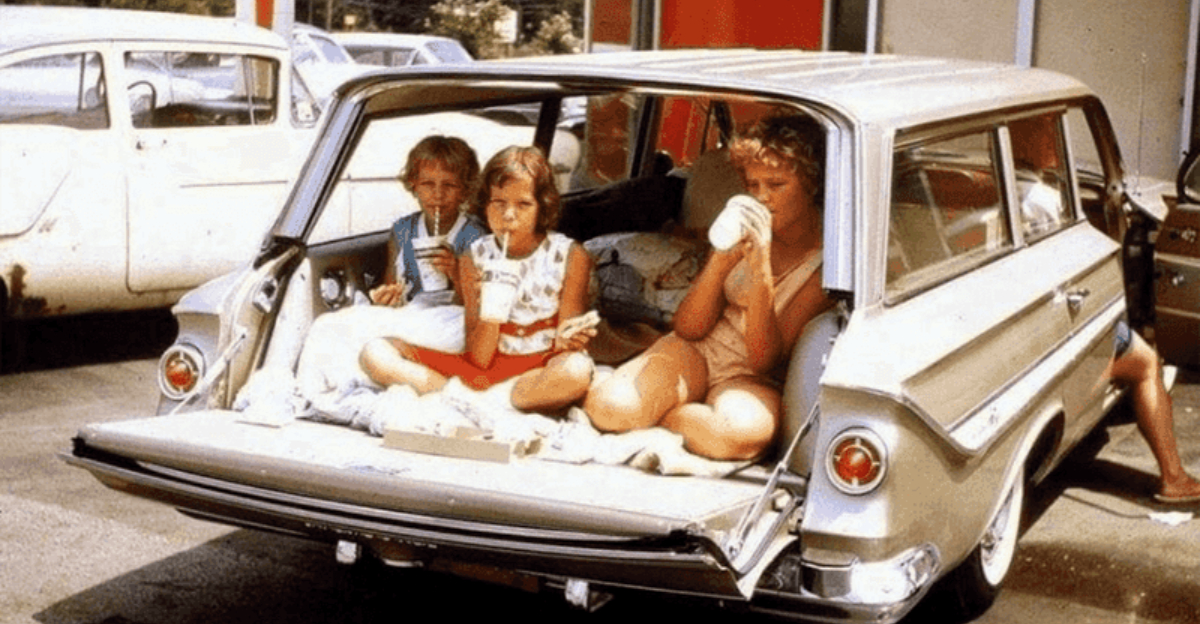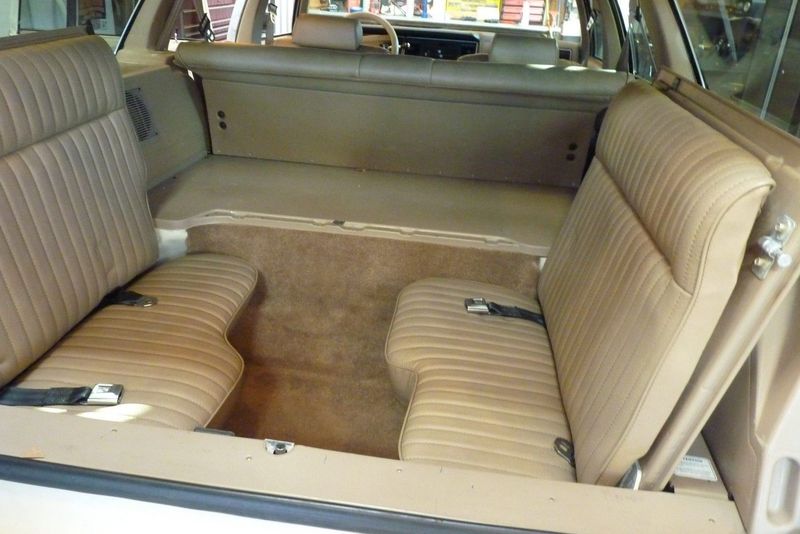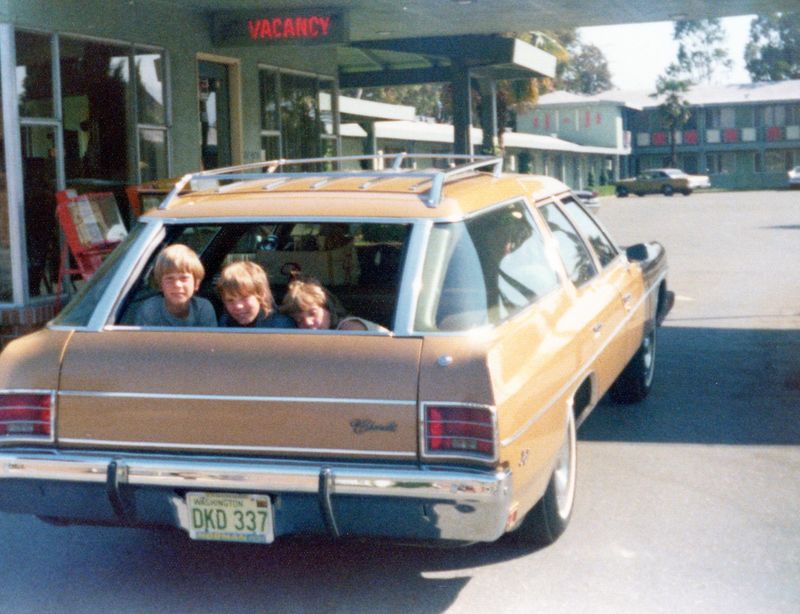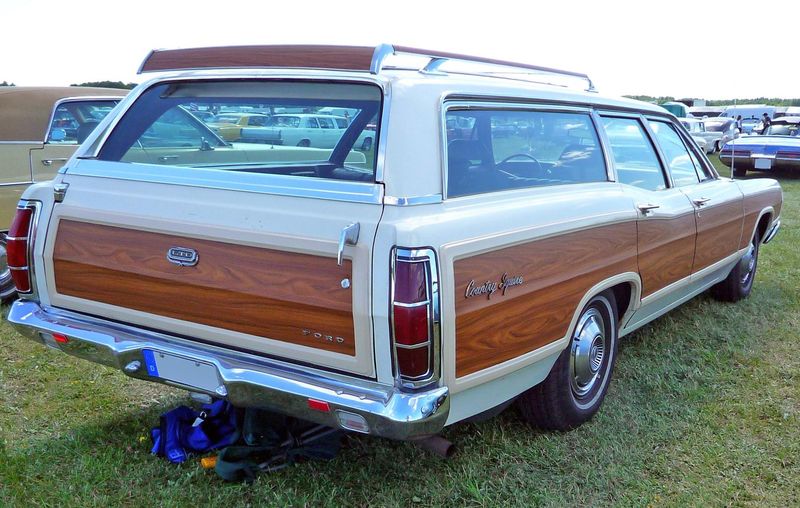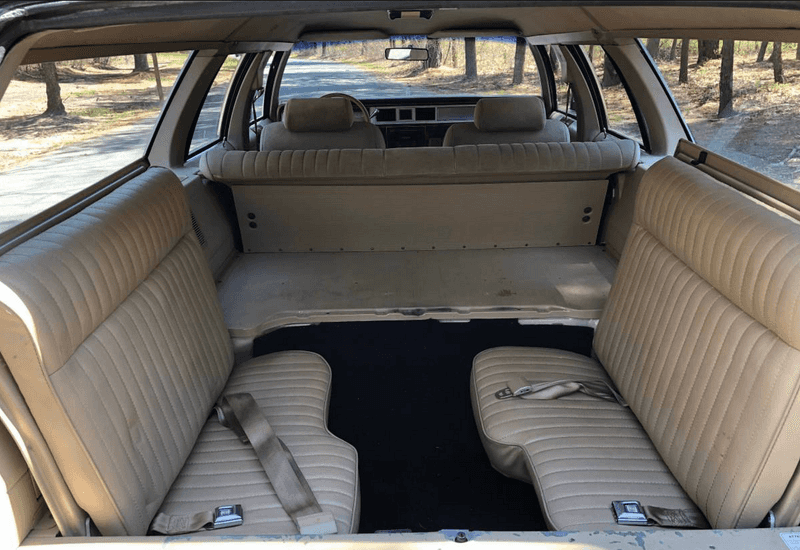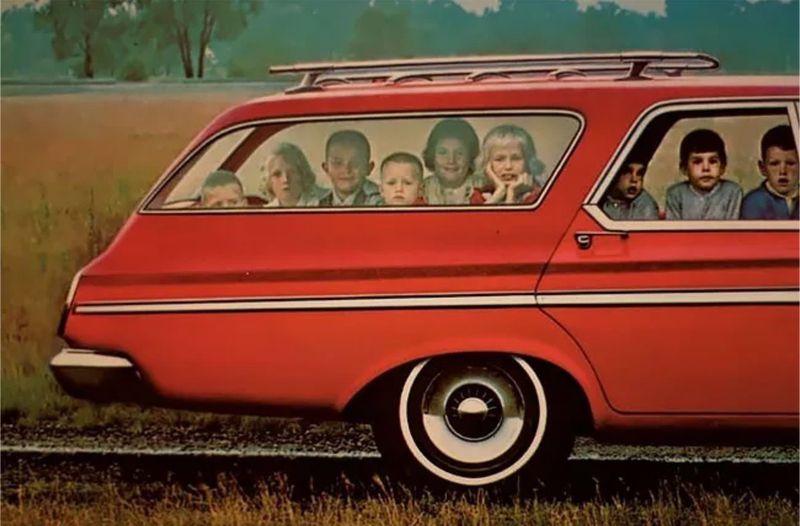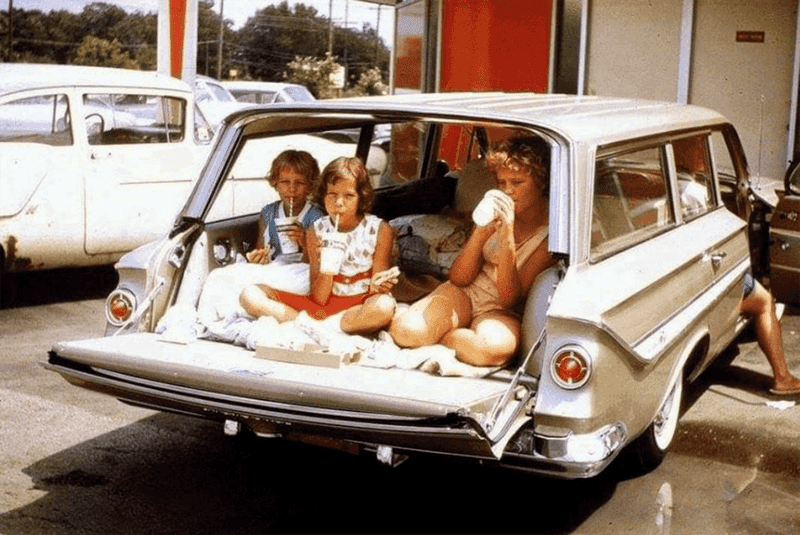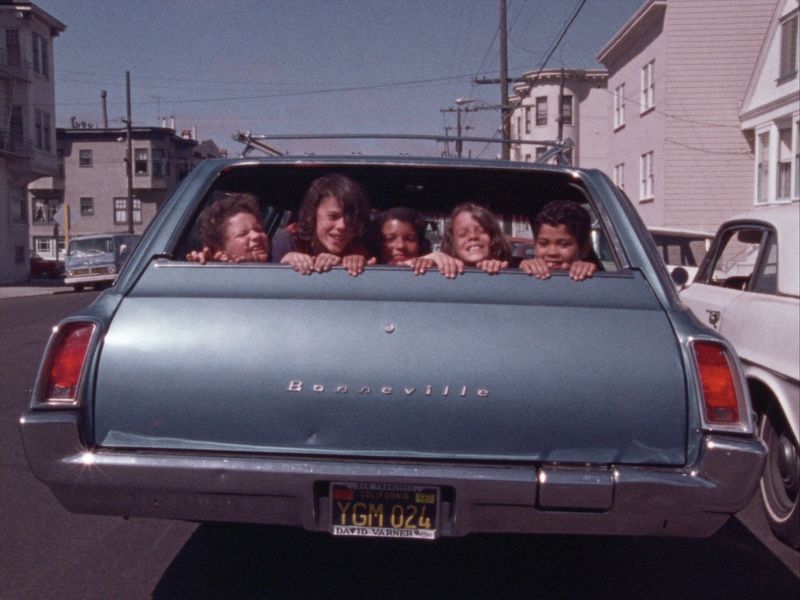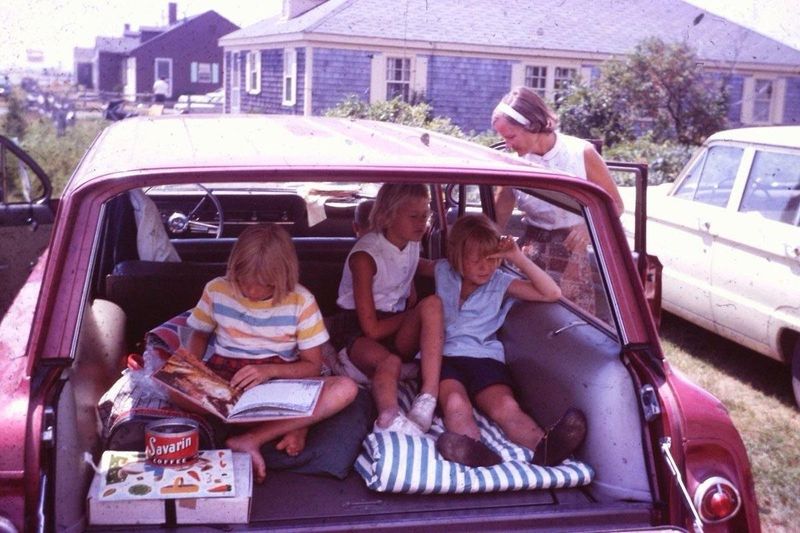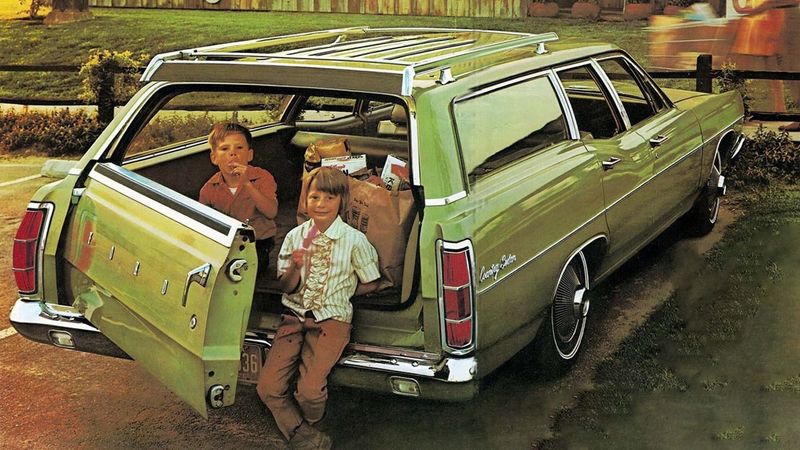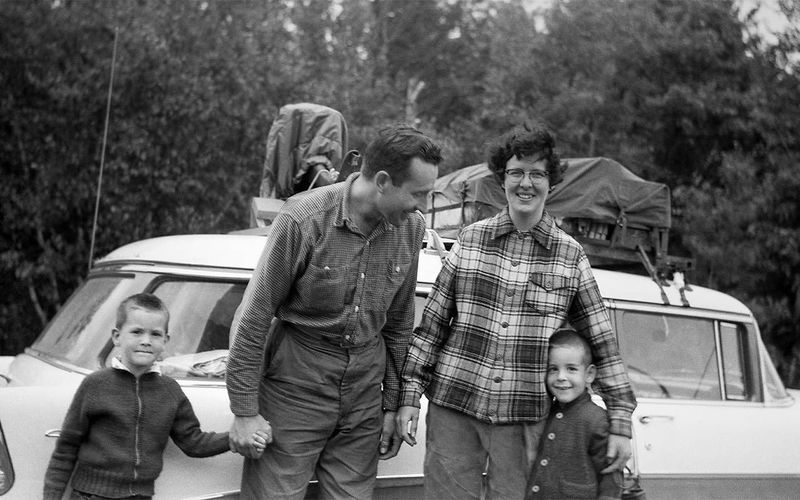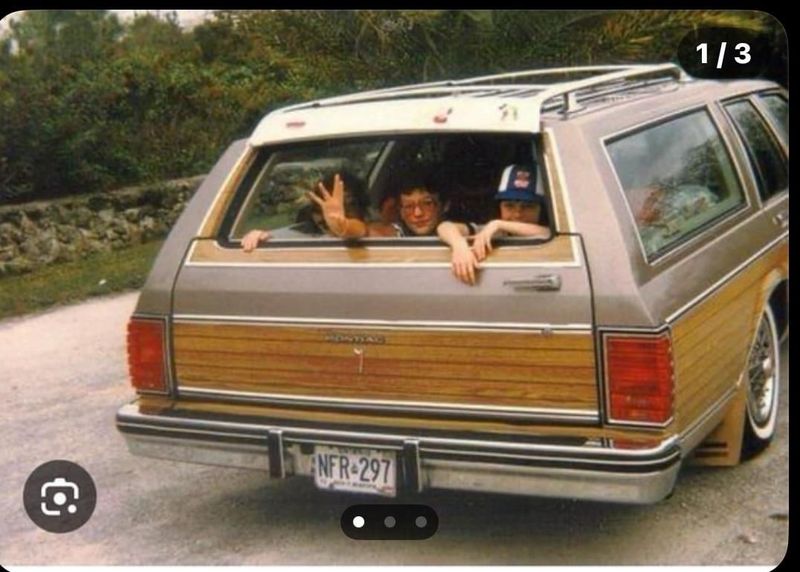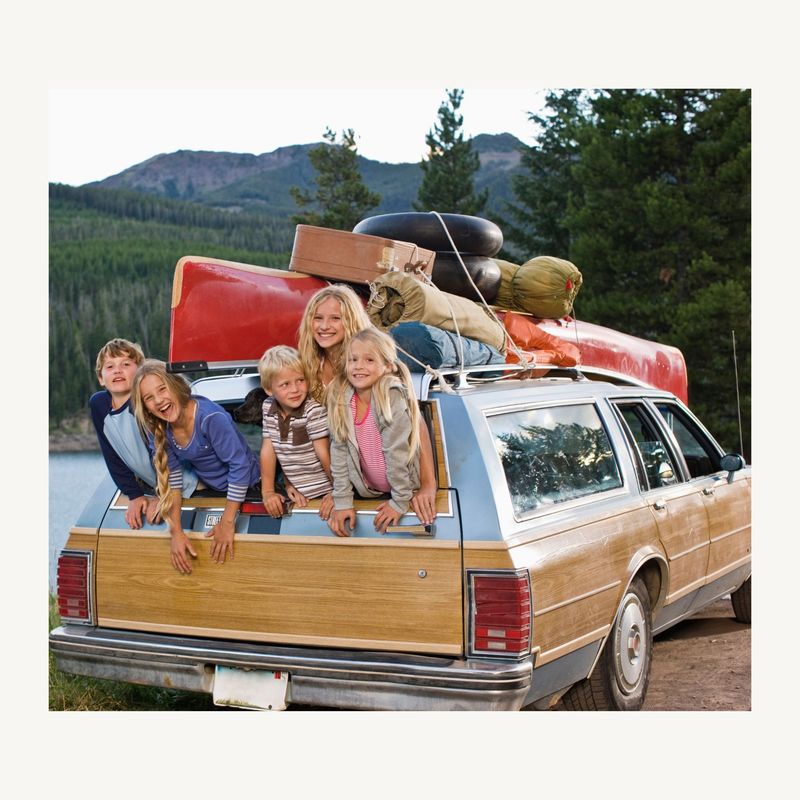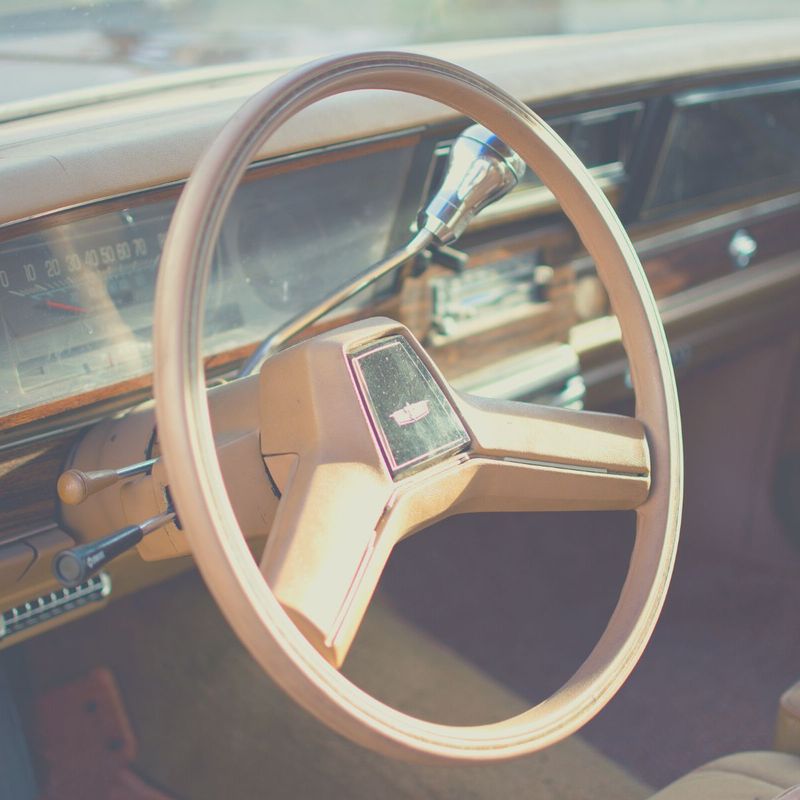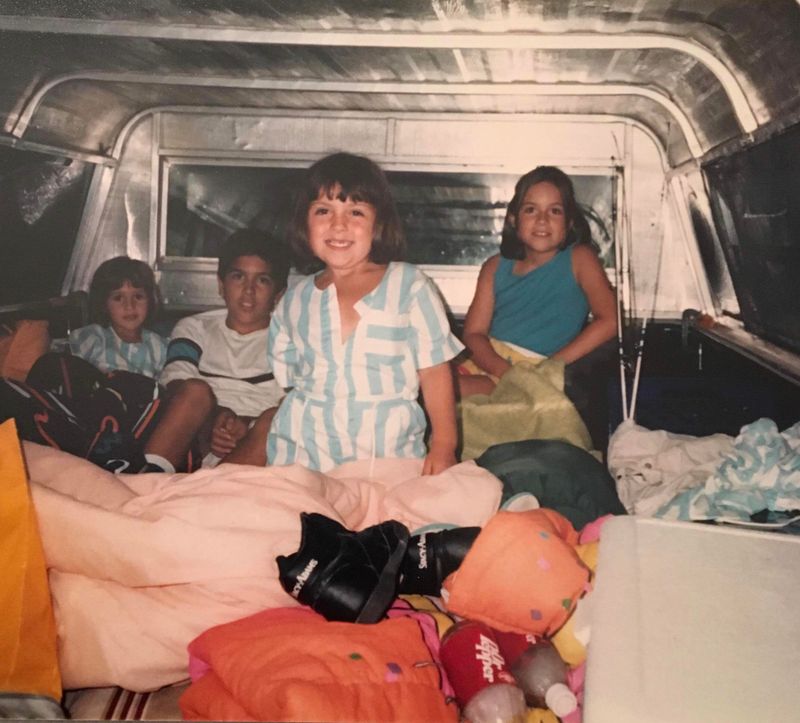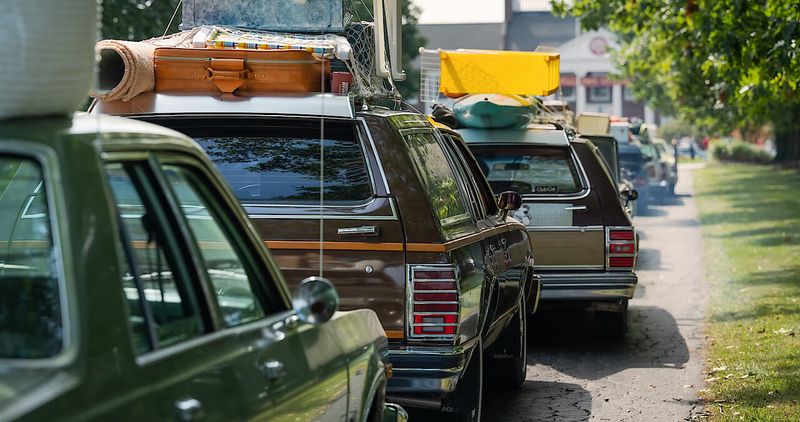For many, growing up involved adventures in a family station wagon, a vehicle that was more than just transport; it was a hub of childhood memories.
From the distinctive rear-facing back seat to the summer road trips without air conditioning, station wagons hosted a unique blend of experiences.
This post explores those nostalgic elements that defined a generation’s travel from the wood paneling aesthetics to the jostling for the coveted front seat.
Let’s take a whimsical journey back to those days when the station wagon was a beloved member of the family.
1. The Rear-Facing Back Seat
The rear-facing back seat in a station wagon was legendary for kids. It was the spot where you waved at the cars behind or felt queasy watching the road rush by in reverse. There was something thrilling about being in this unique seat, separated from the rest of the car’s occupants.
The space felt like your own little world, where you could play games or make faces at the drivers behind you. However, the joyride was often interrupted by bouts of carsickness, a common plight for anyone facing the wrong way.
2. No Seatbelts, No Problem
In the days of the station wagon, seatbelts were often an afterthought. Kids sprawled in the back cargo area, enjoying the freedom of an unrestrained ride. It was not uncommon for children to lie down for lengthy trips, turning the back of the wagon into a makeshift bed or play area.
Parents didn’t worry much about safety belts, allowing kids to roam the interior freely. The lack of seatbelts was a recipe for both fun and chaos, as children could move around to chat, play, or nap as they pleased.
3. The Wood Paneling Look
The wood paneling on station wagons made them instantly recognizable. This faux-wood trim gave the vehicle a unique, rustic charm, reminiscent of a log cabin on wheels. It was a staple feature for many wagons, elevating their aesthetic with a touch of nostalgia.
The paneling, though purely decorative, became a beloved aspect of the station wagon’s identity. Its distinct appearance often drew both admiration and ridicule, but undeniably, it was a key element of the car’s charm. Families embraced this quirky feature, recalling it fondly as part of their travel adventures.
4. The Window That Rolled Down in the Back
The roll-down rear window was a beloved feature in many station wagons. It was perfect for yelling playful goodbyes to friends or letting the breeze whip through your hair on a warm day.
Kids found joy in this unique feature, using it as a portal to communicate with the world outside. It was also handy for sneaking in a few extra groceries during shopping trips.
Although now a rarity, the roll-down window was a small luxury that added to the station wagon’s charm and practicality, creating cherished memories for those who experienced it.
5. Summer Road Trips with No AC
Summer road trips in a station wagon were iconic, often lacking air conditioning, which meant windows down and hair flying. Families sweated it out together, turning the journey into a shared adventure.
The absence of AC made every breeze a welcome relief, and strategic positioning near air vents was a prized strategy. Arguments over the best seats were common, especially when the sun blazed overhead.
Despite the heat, these trips created lasting memories, as families found joy in the journey itself. Songs, games, and laughter filled the car, transforming the heat into a bonding experience.
6. The Giant Bench Seat
The wide bench seats of a station wagon were a hallmark of its spacious interior. Accommodating three or more passengers comfortably in the front and back, these seats fostered togetherness.
Kids could snuggle up, share snacks, or play games during long drives. Without the confines of individual seats, siblings often jostled for space, making the ride lively and fun.
The bench seat, with its expansive room, allowed for a unique social experience, unlike today’s compartmentalized seating. It was not just a seat but a stage for the antics and camaraderie that filled family trips.
7. The Loud Turn Signals
The loud turn signals of station wagons were unforgettable, with their distinct “click-clack” sound echoing through the car. This noise was impossible to ignore, often becoming part of the vehicle’s personality.
Kids in the backseat would mimic the rhythm or use it as a beat for impromptu songs. Despite its simplicity, this auditory element became embedded in the family travel experience.
The sound signaled turns and lane changes, but also heralded a journey’s twists and turns. It was a comforting constant, accompanying countless family adventures, and remains a nostalgic memory for many.
8. Fighting Over Who Got to Sit Up Front
The front passenger seat of a station wagon was prime real estate, often reserved for the oldest or favorite child. It was an ongoing battle among siblings, each vying for the chance to sit beside the driver.
Winning this coveted spot meant access to the radio dials and a front-row view of the journey. The competition for this seat was fierce but playful, adding another layer to the family dynamic.
This small victory was about more than the seat; it symbolized independence and a little extra responsibility, cherished by whoever claimed it.
9. Car Sickness Was a Constant Battle
Car sickness was an all-too-common affliction for kids in station wagons, especially those in the rear-facing back seat. The unusual orientation heightened motion sensitivity, leaving many young travelers feeling queasy.
Parents often armed with remedies like ginger candies or crackers, would try to alleviate their children’s discomfort. The battle against nausea was a frequent topic of conversation, as families navigated winding roads and bumpy highways.
Despite the discomfort, these experiences were part of the station wagon journey, teaching patience and resilience. Over time, these bouts of car sickness became another shared family story.
10. The “Way-Back” Was a Playground
The “way-back” of a station wagon, devoid of seats, became an impromptu playground for kids. It was a space for creativity, where games were invented and friendships flourished on long journeys.
Making faces at passing cars or siblings was a popular pastime, turning the simplest rides into entertaining adventures. The openness of the cargo area provided room for imaginations to soar, without the constraints of seatbelts or devices.
These playful moments in the “way-back” became cherished memories, highlighting the innocence and joy of childhood spent in the family station wagon.
11. Piling In After School or Sports Practice
Station wagons were the ultimate kid movers, especially after school or sports practice. Capable of fitting an entire team, they were indispensable for parents playing taxi.
The car would fill with chatter, laughter, and the aroma of sweaty gear, capturing the essence of post-activity camaraderie.
Kids jostled for seats, shared snacks, and recounted the day’s events. The spacious wagon made these moments possible, turning mundane rides into lively gatherings.
This ability to accommodate everyone effortlessly made station wagons a beloved choice for busy families, leaving lasting memories of youthful hustle and camaraderie.
12. The Massive, Hard-to-Close Tailgate
The large tailgate of a station wagon was both a blessing and a challenge. It facilitated easy loading of groceries, gear, and more, but closing it required significant effort. Kids often struggled to slam it shut, needing a mighty push or a parent’s help.
The tailgate became a test of strength, with a satisfying thud marking success. Despite its weight, the tailgate was a beloved feature, embodying the station wagon’s practicality.
Memories of wrestling with the tailgate remain vivid, as they encapsulated the youthful determination and teamwork involved in everyday tasks.
13. The Radio with Manual Dials
The manual radio dials in a station wagon required skill and patience to tune into your favorite station. Kids loved fiddling with these dials, learning the art of finding the perfect signal.
It was a task that required focus, often turning into a game or competition among siblings. The radio was the soundtrack of family trips, playing hits of the day or local news.
Despite the simplicity of the technology, it fostered an appreciation for music and patience. For many, these dials were more than just a tool; they were a gateway to shared musical journeys.
14. Mom or Dad’s Arm Flying Across to Stop You
The instinctive arm reach of a parent while braking became an unofficial seatbelt in station wagons. This protective gesture was a common occurrence, as parents sought to shield their children from sudden stops.
It embodied the care and quick reflexes familiar to many who grew up in these cars. This move was both comforting and amusing, highlighting the bond between parent and child.
It was a testament to the intuitive nature of parental protection, remaining a fond memory of family travel. This simple act encapsulated the watchful love and assurance provided on countless journeys.
15. The Endless Rattles and Creaks
Station wagons were renowned for their symphony of rattles and creaks, sounds that became an integral part of the driving experience. Whether from loose trim, the tailgate, or aging suspension, these noises accompanied every trip.
For many, they became a comforting background hum, adding character to the vehicle. Kids would often try to identify the source of each creak, turning it into a game. Despite the imperfections, these auditory quirks were part of the wagon’s charm, reminding families of countless adventures.
The rattles and creaks symbolized the history and resilience of a well-traveled family car.
